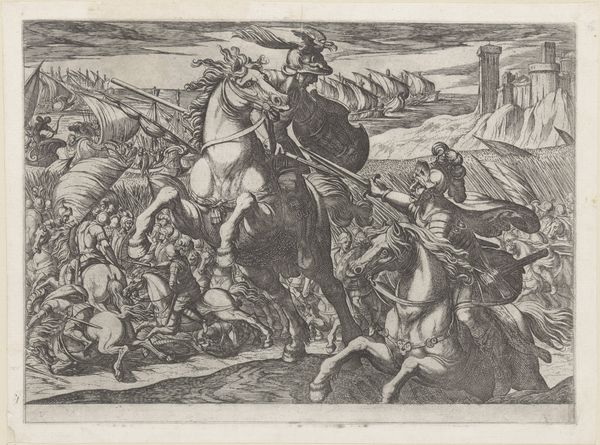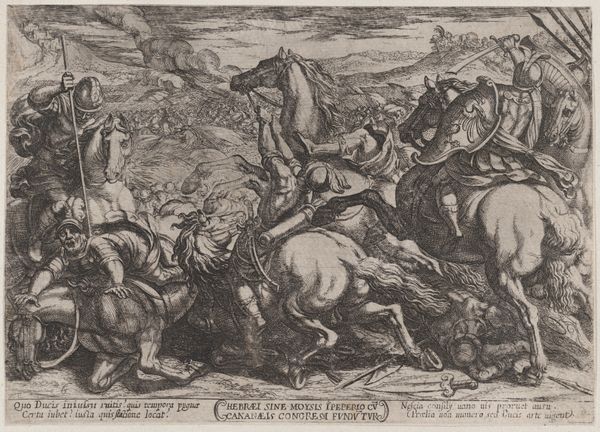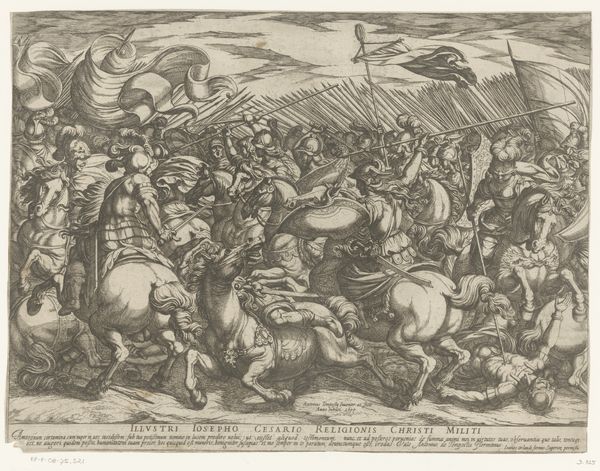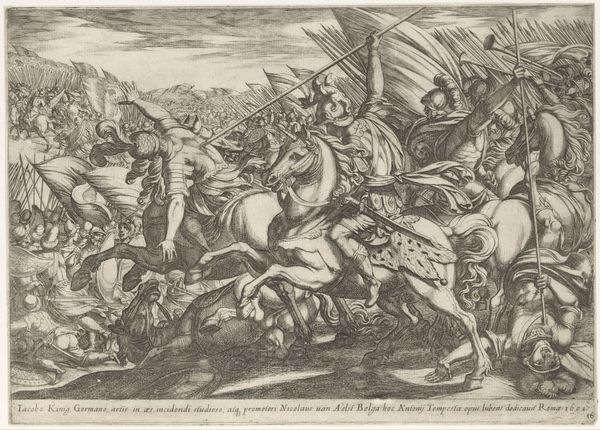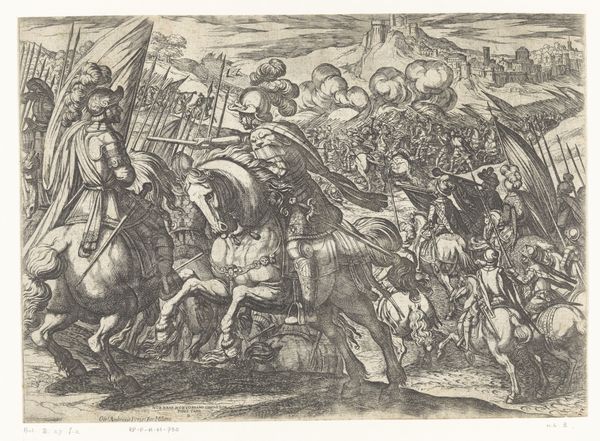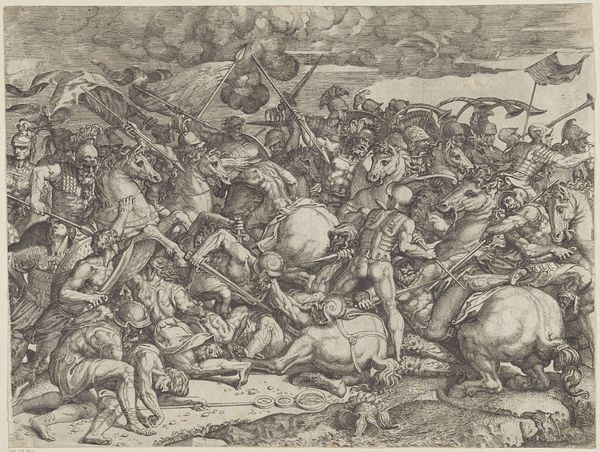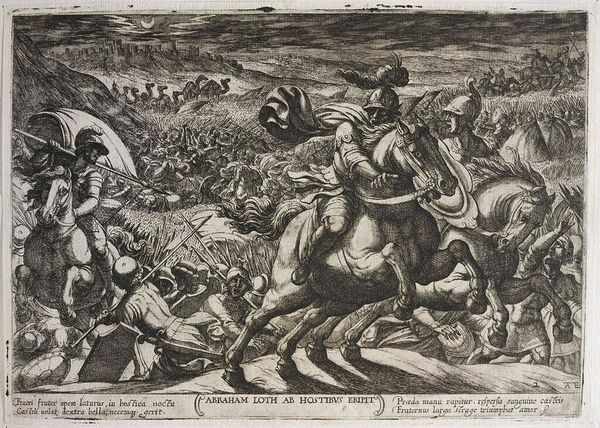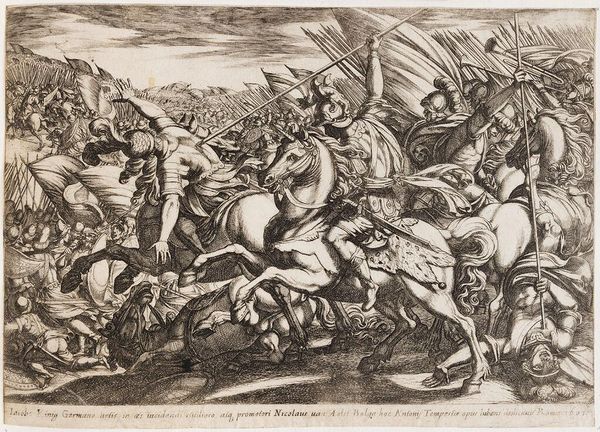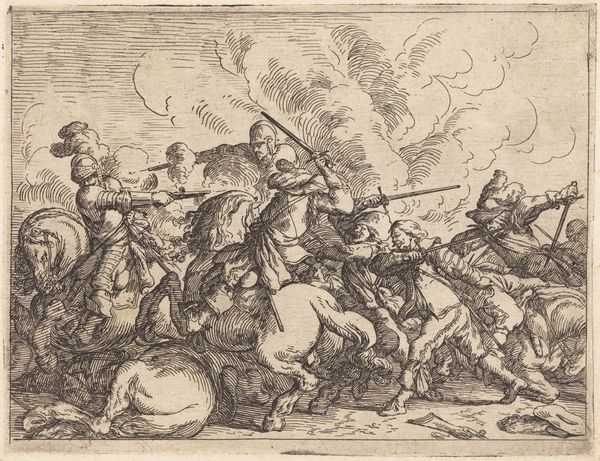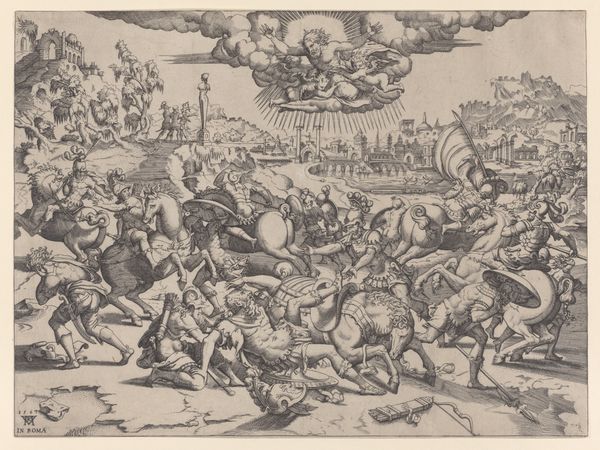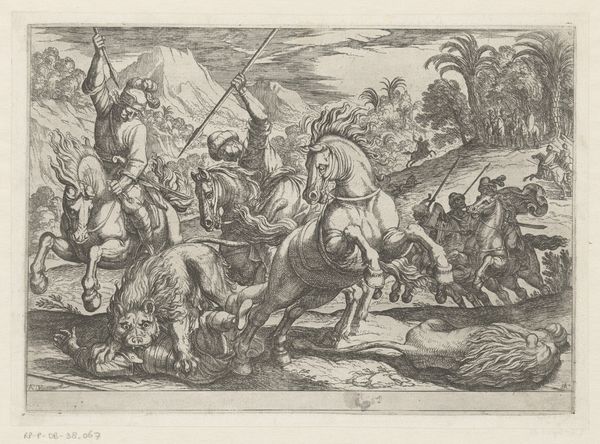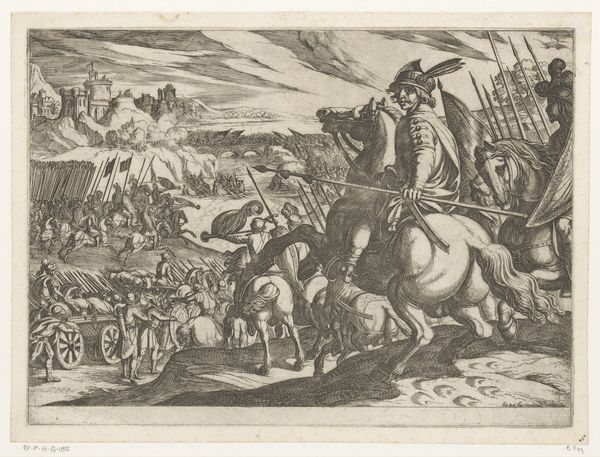
Plate 2: Abraham Liberating His Nephew Lot, from 'The Battles of the Old Testament' 1585 - 1615
0:00
0:00
drawing, print, engraving
#
drawing
#
ink drawing
#
medieval
#
narrative-art
#
baroque
#
pen drawing
# print
#
figuration
#
soldier
#
ancient-mediterranean
#
horse
#
line
#
islamic-art
#
genre-painting
#
history-painting
#
engraving
Dimensions: Sheet: 7 7/8 in. × 11 in. (20 × 28 cm)
Copyright: Public Domain
Editor: We are looking at "Plate 2: Abraham Liberating His Nephew Lot, from 'The Battles of the Old Testament,'" an engraving by Antonio Tempesta made between 1585 and 1615. It is quite a dramatic battle scene! What is striking is the sheer density of figures and how everyone is interconnected through these fine, thin lines. What do you see in this piece, particularly in relation to its historical context? Curator: Indeed. Considering the historical moment, this print speaks volumes about the role of art in shaping cultural memory and national identity. It’s more than just an illustration of a biblical event; it's a carefully constructed image intended for public consumption. Consider how the heroic portrayal of Abraham, a figure central to Judaism, Christianity, and Islam, might have been deployed in debates about religious or political authority during the artist's lifetime. The imagined past serves particular interests in the present. Editor: That's interesting. So, it is less about the accuracy of the event, and more about using it to convey a message? Curator: Precisely. Look at the composition itself. The dynamism, the chaos – they’re not merely stylistic choices. The artist uses these elements to create an impression of righteous conflict, framing Abraham as a divinely sanctioned warrior. Think about the function of prints during this era. How did they circulate, and who was the intended audience? Who controlled and had access to the image and who did not? That can tell us a lot. Editor: I hadn't thought about it that way. It’s like the artwork is also performing a specific job within the world. Curator: Exactly! And by understanding that job, we can begin to unravel the complex interplay of art, power, and social influence. Considering the social, cultural and political forces help to understand the creation and public role of this historical image. Editor: That gives me a completely different perspective on historical artworks like this. Thank you! Curator: My pleasure. I found it interesting, too.
Comments
No comments
Be the first to comment and join the conversation on the ultimate creative platform.
